(Nointel, 1745 – Paris, 1827)
Flowers in a glass, placed on a book
Gouache on paper
H. 38.5 cm; W. 30.5 cm
The biography of Jean-Louis Prevost has recently benefited from new proven insights, thanks to the remarkable study by Gabriela Lamy on the Prevost siblings, carried out as part of the research program of the Château de Versailles "Plants in the great European gardens in the modern era". Son of a winegrower from Isle-Adam, Jean-Louis Prevost, following two of his brothers Jean-Jacques (born in 1736) and Guillaume (1738-1788), received for two years (1761 and 1762), thanks to the recommendation of Nicolas Cochin, the teaching of the flower and animal painter Jean-Jacques Bachelier (1724-1806) at the Sèvres porcelain factory. The Prevost brothers were then hired for five years by the farmer-general Jacques-Jérémie Roussel (1712-1766), one of the founders of the Vincennes porcelain factory, a great collector and passionate about gardens and botany; Roussel commissioned them to illustrate (more than 1800 drawings) the collection Horti Cellensis, which represents all the plants in Roussel's garden in his château of La Celle Saint-Cloud. Then, while Guillaume continued his specialization in botanical plates (he would work at Trianon for the king and accompany La Pérouse on his expedition on the Astrolabe), Jean-Jacques and Jean-Louis developed a more artistic register and became members of the Académie de Saint-Luc. The two brothers had a very similar style (their works were sometimes confused), and quickly garnered admiration and glowing reviews at the exhibitions in which they participated (Académie de Saint-Luc, Salon de la Jeunesse, Salon du Colisée, etc.). The dealer Le Brun wrote in 1776: "The flowers, birds and fruits of Messieurs Prevost attracted all eyes and were preciously painted. A little more application and they will be the Van Huysums of France." The compliment is flattering and fair, but in fact, the Prevosts, and in particular Jean-Louis, constitute rather a synthesis or a link between the dazzling exuberance of Van Huysum and the almost scientific precision of Redouté. They were among the first representatives of these artists who combined botanical realism and delicate compositions with a poetic atmosphere. With his near contemporary Anne Vallayer-Coster (1744-1818), he thus produced works from the beginning of the 1770s with a very "Marie-Antoinette" spirit, almost rustic, perhaps even more perceptible in his works on paper; the compositions often included birds' nests or domestic objects such as baskets or sewing kits, which evoked the sweetness of life. But unlike Vallayer-Coster, who also regularly distinguished himself in portraits, genre scenes, or even animal still lifes, Prevost concentrated on flowers and fruits. Prevost and Vallayer-Coster were followed by Flemish and Dutch painters, who came to settle in Paris at the same time. Gérard Van Spaendonck was quite close to Prevost, and he would also be painter of Marie-Antoinette's cabinet; Van Dael, Van Pol and Van Os arrived a little later, and if their works were just as refined, with the same mixture of botanical realism and poetry, the atmosphere was now a little less "light", and in fact more neo-classical. In these last years of the Ancien Régime, Jean-Louis Prevost was collected by great amateurs, such as Blondel de Gagny, the Prince de Conti, or the Marquis de Livois. He participated in the Salon from 1791, and exhibited there until 1802. In 1793, he obtained accommodation at the Gobelins factory, which he kept almost until the end of his life. Despite the quality of his works and his great success, Prevost did not occupy an official position in the artistic community, and to this day we do not know of any studio or students.
Our gouache, which could be integrated into Prevost's corpus, is to be compared with two works preserved at the Fitzwilliam Museum in Cambridge, using the same technique and opting for this quasi-naivety in the treatment. The composition, very interesting, presents us with a beautiful binding of an Italian dictionary from the second half of the 18th century, on which is placed a simple glass of water, not chiseled. The bouquet of flowers in pastel shades, seems to be composed among others of jasmine.









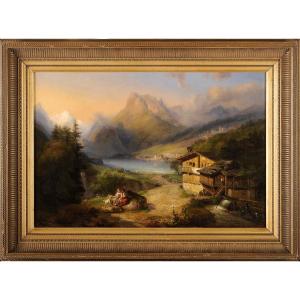













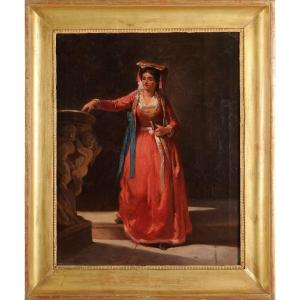
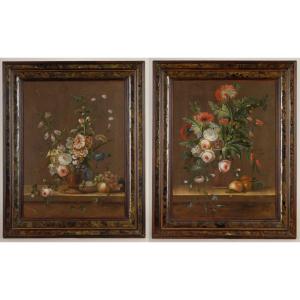
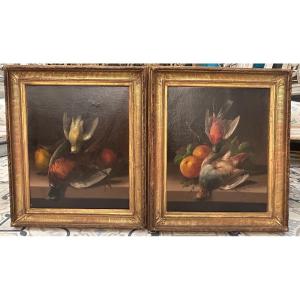
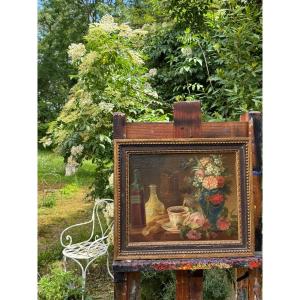
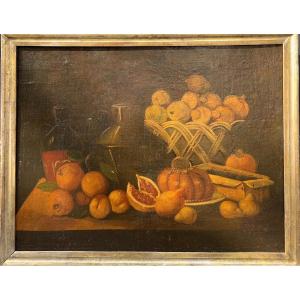
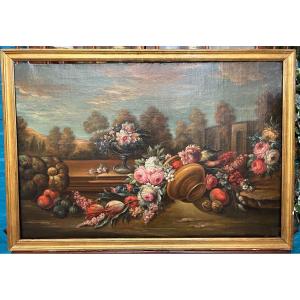



 Le Magazine de PROANTIC
Le Magazine de PROANTIC TRÉSORS Magazine
TRÉSORS Magazine Rivista Artiquariato
Rivista Artiquariato